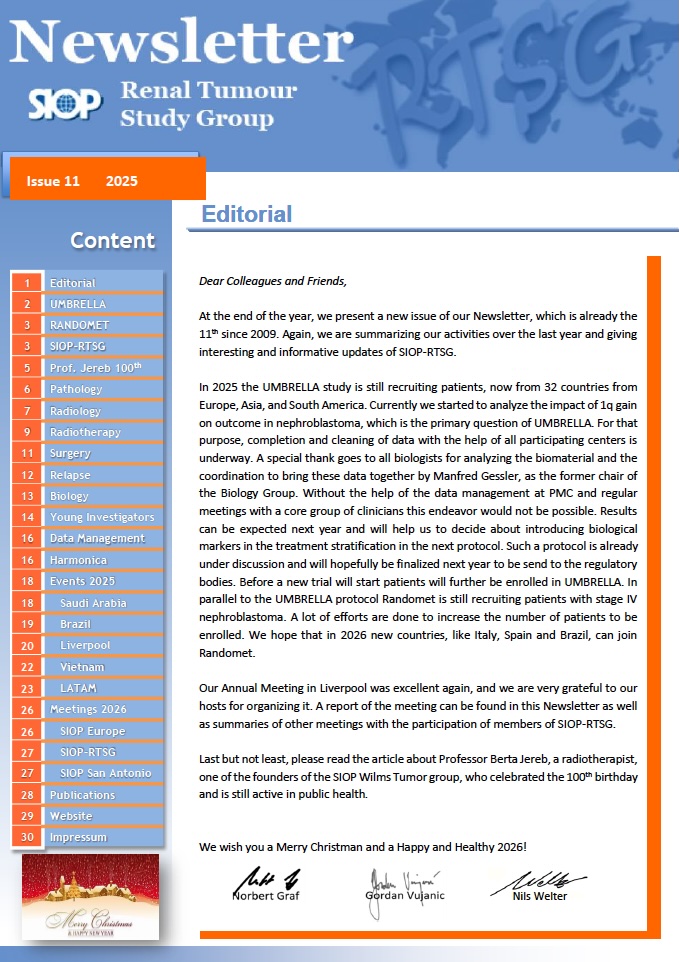The COVID-19 pandemic is one of the most serious global challenges to delivering affordable and equitable treatment to children with cancer we have witnessed in the last few decades. This Special Report aims to summarise general principles for continuing multi-disciplinary care during the SARS-CoV-2 (COVID-19) pandemic. With contributions from the leadership of the International Society for Paediatric Oncology (SIOP), Children’s Oncology Group (COG), St Jude Global programme and Childhood Cancer International, we have sought to provide a framework for healthcare teams caring for children with cancer during the pandemic. We anticipate the burden will fall particularly heavily on children, their families and cancer services in low- and middleincome countries. Therefore, we have brought together the relevant clinical leads from SIOPEurope, COG and SIOP-PODC (Pediatric Oncology in Developing Countries) to focus on the six most curable cancers that are part of the WHO Global Initiative in Childhood Cancer. We provide some practical advice for adapting diagnostic and treatment protocols for children with cancer during the pandemic, the measures taken to contain it (e.g. extreme social distancing) and how to prepare for the anticipated recovery period.
The paper can be found here.
Wilms Tumour:
Wilms Tumor (WT) or nephroblastoma is a highly curable childhood cancer with cure rates around 90% as shown by the SIOP Renal Tumour Study Group (SIOP-RTSG) and the Children’s Oncology Group (COG) (1). During the last decades treatment is stratified according to clinical (SIOP and COG) and molecular risk factors (COG) to avoid under- and overtreatment. This resulted in curing patients by minimizing acute toxicities and late effects and in avoiding as many relapses as possible. To provide this standard of care will be a specific challenge during the COVID-19 pandemic as the ability to deliver adequate diagnosis, treatment and supportive care for patients with WT will vary from country to country and even from region to region depending on the overload of the health care system caused by COVID-19.
Diagnosis.
WT in general is a fast growing tumor with a doubling time between 2 – 3 weeks (2). A comparison between UK and Germany showed that a delay in diagnosis between first symptoms and tumor diagnosis should be avoided (3). To avoid sedation of small children for MRI, a CT scan of the abdomen and the lung should be carried out as soon as clinical signs of a tumor mass in the abdomen are palpated and ultrasound shows a kidney tumor. Imaging studies need to be of high quality and should be performed at a pediatric cancer center. Exact staging at the time of diagnosis needs to rule out bilateral tumors, vena caval thrombus and metastatic disease to the lungs and / or liver. In pandemic circumstances or settings with more limited resources, consideration may be given to staging with US and Chest Xray (CXR). These provide less detail and it is known treatment based on CXR compared to CT findings results in inferior EFS (4). Nevertheless, whenever available thoracic CT should be done, as it may recognize COVID-19 infection in asymptomatic children and avoid spread of the infection by adopting adequate isolation of infected children. Bone and brain metastasis at diagnosis are rare and further imaging studies are only needed if there are specific symptoms or histology shows clear cell sarcoma (CSSK) or rhabdoid tumor of the kidney (RTK). Given the fast doubling time, patients with predisposition syndromes should maintain diagnostic imaging surveillance frequency, if feasible (5), (6), and parents should be taught how to examine the abdomen of the child for a mass. After discussion with parents, relaxation of the stringent frequency of follow up may be considered in patients with a predisposition syndrome with a relatively low risk of developing WT, balancing the risk of community or hospital exposure to COVID-19.
Start of Treatment
There are differences in treatment protocols between COG and SIOP regarding the start of treatment. COG recommends primary nephrectomy if thought feasible on imaging, with biopsy, chemotherapy and delayed nephrectomy only used for patients not amenable to resection up front. If primary surgery or biopsy in the COG setting is not possible secondary to operating room limitations under COVID-19, strong consideration should be to start with pre-operative chemotherapy according to SIOP protocols. If neoadjuvant chemotherapy is initiated using a SIOP protocol, the full SIOP approach should be applied. Tumor nephrectomy after pre-operative chemotherapy should be planned from the day of treatment start. If using COG neoadjuvant therapy of regimen DD4A, the feasibility of tumor nephrectomy should be assessed at 6 weeks. If using SIOP induction therapy, tumor nephrectomy should be done at week 5 but could be delayed by up to a further four weeks in non-metastatic tumors providing response was seen during the first 4 weeks. In SIOP 9 it was demonstrated by randomization that a second cycle of AV over 4 weeks resulted in further tumor volume shrinkage, if this was the case during the first cycle. Those without shrinkage were not randomized (7). In patients with metastatic disease prolongation of preoperative chemotherapy was not tested in the SIOP setting, thus resulting in a maximum of 6 weeks in unilateral metastatic tumors as standard. In bilateral tumors, response to treatment needs to be followed by at least ultrasound. After 6 weeks of chemotherapy the tumor should be reevaluated and in case of shrinkage chemotherapy can be prolonged up to 12 weeks. In both COG and SIOP settings, every effort should be made to avoid delaying definitive tumor nephrectomy beyond 12 weeks. In case of tumor progression despite pre-operative chemotherapy, immediate surgery should be attempted despite the pandemic situation.
Note that stage I FHWT patients less than 2 years of age had similar EFS and OS if treated with single agent vincristine for 10 weeks compared to the COG regimen EE4A 8). Observation only after tumor nephrectomy in stage I FH WT with a tumor weight of < 550 g and negative lymph nodes is also a validated strategy (9). Extension of this to older ages and bigger tumor weights is the subject of an upcoming COG study and would not be considered standard of care, although in pandemic situations a mild relaxation of the age and tumor weight restrictions could be considered after careful discussion with the family. There is recent evidence showing very good outcomes for patients with stage I epithelial tumors of any age irrespective of use of chemotherapy (10). Observation alone in this cohort is also being considered in the next generation of COG trials but may be considered in pandemic settings with limited resources.
Surgery
Tumor nephrectomies should be done as soon as there is enough capacity to anticipate the possible need for post-operative high dependency/intensive care unit for such a child and that there is an assurance of adequate blood product support given the current pressures on the blood donation system. Avoidance of sharing a critical care unit with ventilated COVID-19 patients is highly recommended. It is also recommended that, in general, surgeons should not perform laparoscopic tumor nephrectomies due to the prolongation of the surgical time. (Please see related IPSO guidelines discussion in this manuscript). The need for resection of lung metastases needs to be balanced on an individual basis if further intensification of chemotherapy may avoid lung surgery (11). In case of high risk or unfavorable histology, metastasectomy should be performed in the context of SIOP protocols, if no CR can be achieved by chemotherapy alone but may be achievable by additional surgery (12). In children younger than 6 months, where international consensus currently advises direct surgery in COG and SIOP, pretreatment with chemotherapy may be seriously considered over the age of 2 months in COVID-19 situation if operating theatre access is restricted.
Postoperative chemotherapy
Chemotherapy in low and intermediate risk favorable tumors should always be given according to the current treatment plan, with permitted modifications in patients with toxicities. Severe side effects of chemotherapy are rare in these patients. (13). In the setting of adequate resources, it is recommended not to empirically reduce the dose or duration of established chemotherapy protocols, as the impact of such a reduction on risk of recurrence is untested. Treatment for relapse will be more challenging as it will be more intensive and may cause more acute toxicity, including need for transfusion support, and more hospital stays for supportive care. In case reference pathology or central surgical or diagnostic imaging review is not possible, then treatment needs to be given according to locally assigned stage and pathology recognizing that there is a discrepancy in histology and staging between 10 and 15% on central review (14). If molecular biomarkers are not available for risk stratification purposes in COG, then consideration may be given to initiating chemotherapy solely based on stage and histology. Combined LOH1p and 16q is present in 5% of patients and intensification of treatment has demonstrated a reduced risk of relapse, so if available should be utilized for treatment stratification (15). 1q gain is an adverse biomarker present in approximately 25-30% of FH WT patients but there is insufficient evidence to recommend intensification for this biomarker outside of a clinical trial.
In patients with high risk or unfavorable histology, treatment is much more intensive resulting in more hospital stays caused by the treatment itself but also because of more acute toxicities, mainly febrile episodes due to neutropenia. As such side effects may also result in treatment delays, one can consider using G-CSF during treatment episodes. Reduction of dosage of drugs should only be considered if episodes of acute toxicities were life threatening in preceding treatment courses. The risk of poorer outcome in this group of patients is not outweighed by sparing toxicity. Patients with relapsed FH WT have an approximately 50% salvage rate whereas those with diffuse anaplastic WT are unlikely to survive a relapse. In the event of overwhelmed critical care infrastructure, palliation of the latter patients in considering prioritization to ventilator access should be consistent with local, established pathways of COVID-19 care.
Radiotherapy
The start of radiotherapy may be possible to delay for not longer than 10-12 weeks if the local situation does not allow a faster start. Such a delay should be avoided in high risk tumors. Dosing, fractionating and radiation fields should not be changed. In case of the need for lung irradiation this should always be considered, if it can be prevented by intensification of chemotherapy using SIOP protocols.
Follow-up
Visits to hospitals should be reduced to the minimal need. Telemedicine may help in this respect. This reduction also includes the frequency of imaging studies after the end of treatment. This frequency should depend on the risk of the patient and the local COVID-19 situation. Parents should be taught to examine the abdomen for masses. CT should not be used for routine surveillance post completion of therapy based on findings from Mullen et al showing no difference in EFS or OS based on imaging modality (16). Consideration for rapid point of care Ultrasound may be adopted in the absence of access to more routine diagnostic imaging. Brok et al. have called for cessation of diagnostic imaging after 2 years of follow up in the SIOP setting although this has not been widely adopted in COG (17).
In summary, only a few changes are recommended for the treatment of Wilms tumour compared to standard treatment protocols. They are mainly dependent on the pressure of the local COVID-19 situation and leverage established evidence from the two major cooperative group approaches to renal tumors. Adherence to full dose and duration of evidence-based chemotherapy and radiotherapy recommendations are strongly recommended.
References
1. Dome JS, Graf N, Geller JI, Fernandez C V., Mullen EA, Spreafico F, et al. Advances in Wilms tumor treatment and biology: Progress through international collaboration. Journal of Clinical Oncology. 2015;33(27):2999–3007.
2. Zoubek A, Slavc I, Mann G, Trittenwein G, Gadner H. Natural course of a Wilms’ tumour. The Lancet [Internet]. 1999 Jul;354(9175):344. Available from: https://linkinghub.elsevier.com/retrieve/pii/S0140673605752570
3. Pritchard-Jones K, Graf N, van Tinteren H, Craft A. Evidence for a delay in diagnosis of Wilms’ tumour in the UK compared with Germany: implications for primary care for children. Archives of disease in childhood [Internet]. 2016 May 1 [cited 2017 Dec 18];101(5):417–20. Available from: http://www.ncbi.nlm.nih.gov/pubmed/26948824
4. Grundy PE, Green DM, Dirks AC, Berendt AE, Breslow NE, Anderson JR, et al. Clinical significance of pulmonary nodules detected by CT and Not CXR in patients treated for favorable histology Wilms tumor on national Wilms tumor studies-4 and -5: A report from the Children’s Oncology Group. Pediatric Blood & Cancer [Internet]. 2012 Oct;59(4):631–5. Available from: http://www.ncbi.nlm.nih.gov/pubmed/26682139%0Ahttp://www.pubmedcentral.nih.gov/articlerender.fcgi?artid=PMC4671966
5. Kalish JM, Doros L, Helman LJ, Hennekam RC, Kuiper RP, Maas SM, et al. Surveillance Recommendations for Children with Overgrowth Syndromes and Predisposition to Wilms Tumors and Hepatoblastoma. Clinical Cancer Research [Internet]. 2017 Jul 1;23(13):e115–22. Available from: http://www.ncbi.nlm.nih.gov/pubmed/28674120
6. Brioude F, Kalish JM, Mussa A, Foster AC, Bliek J, Ferrero GB, et al. Expert consensus document: Clinical and molecular diagnosis, screening and management of Beckwith–Wiedemann syndrome: an international consensus statement. Nature Reviews Endocrinology [Internet]. 2018 Jan 29; Available from: http://www.nature.com/doifinder/10.1038/nrendo.2017.166
7. Tournade MF, Com-Nougué C, de Kraker J, Ludwig R, Rey A, Burgers JMB, et al. Optimal Duration of Preoperative Therapy in Unilateral and Nonmetastatic Wilms’ Tumor in Children Older Than 6 Months: Results of the Ninth International Society of Pediatric Oncology Wilms’ Tumor Trial and Study. Journal of Clinical Oncology [Internet]. 2001 Jan 15;19(2):488–500. Available from: http://ascopubs.org/doi/10.1200/JCO.2001.19.2.488
8. Pritchard-Jones K, Kelsey A, Vujanic G, Imeson J, Hutton C, Mitchell C. Older Age Is an Adverse Prognostic Factor in Stage I, Favorable Histology Wilms’ Tumor Treated With Vincristine Monochemotherapy: A Study by the United Kingdom Children’s Cancer Study Group, Wilm’s Tumor Working Group. Journal of Clinical Oncology [Internet]. 2003 Sep 1;21(17):3269–75. Available from: http://ascopubs.org/doi/10.1200/JCO.2003.01.062
9. Fernandez C V., Perlman EJ, Mullen EA, Chi Y, Hamilton TE, Gow KW, et al. Clinical Outcome and Biological Predictors of Relapse After Nephrectomy Only for Very Low-risk Wilms Tumor. Annals of Surgery [Internet]. 2017 Apr 1 [cited 2018 Mar 20];265(4):835–40. Available from: https://insights.ovid.com/pubmed?pmid=27811504
10. Parsons LN, Mullen EA, Geller JI, Chi YY, Khanna G, Glick RD, Aldrink JH, Vallance KL, Kim Y, Fernandez CV, Dome JS, Perlman EJ. Outcome Analysis of Stage 1 Epithelial Predominant Favorable Histology Wilms tumors. A report from the Children’s Oncology Group Study AREN03B2. Cancer. 2020;in press.
11. Verschuur A, Tinteren H Van, Graf N, Bergeron C, Sandstedt B, de Kraker J. Treatment of Pulmonary Metastases in Children With Stage IV Nephroblastoma With Risk-Based Use of Pulmonary Radiotherapy. Journal of clinical oncology : official journal of the American Society of Clinical Oncology [Internet]. 2012 Oct 1;30(28):3533–9. Available from: http://www.ncbi.nlm.nih.gov/pubmed/22927531
12. Pasqualini C, Furtwängler R, van Tinteren H, Teixeira RAP, Acha T, Howell L, et al. Outcome of patients with stage IV high-risk Wilms tumour treated according to the SIOP2001 protocol: A report of the SIOP Renal Tumour Study Group. European Journal of Cancer. 2020;128:38–46.
13. Graf N, Tournade MF, de Kraker J: The Role of Preoperative Chemotherapy in the Management of Wilms Tumor - The SIOP Studies. Urologic Clinics of North America, 27:443-454, 2000
14. Vujanić GM, Gessler M, Ooms AHAG, Collini P, Coulomb-l’Hermine A, D’Hooghe E, et al. The UMBRELLA SIOP–RTSG 2016 Wilms tumour pathology and molecular biology protocol. Nature Reviews Urology [Internet]. 2018 Nov 11 [cited 2019 Mar 18];15(11):693–701. Available from: http://www.nature.com/articles/s41585-018-0100-3
15. Dix DB, Fernandez C V., Chi Y-Y, Mullen EA, Geller JI, Gratias EJ, et al. Augmentation of Therapy for Combined Loss of Heterozygosity 1p and 16q in Favorable Histology Wilms Tumor: A Children’s Oncology Group AREN0532 and AREN0533 Study Report. Journal of Clinical Oncology [Internet]. 2019 Oct 20;37(30):2769–77. Available from: http://ascopubs.org/doi/10.1200/JCO.18.01972
16. Mullen EA, Chi Y-Y, Hibbitts E, Anderson JR, Steacy KJ, Geller JI, et al. Impact of Surveillance Imaging Modality on Survival After Recurrence in Patients With Favorable-Histology Wilms Tumor: A Report From the Children’s Oncology Group. Journal of Clinical Oncology [Internet]. 2018 Dec 1;36(34):3396–403. Available from: http://ascopubs.org/doi/10.1200/JCO.18.00076
17. Brok J, Lopez-Yurda M, Tinteren H V, Treger TD, Furtwängler R, Graf N, et al. Relapse of Wilms’ tumour and detection methods: a retrospective analysis of the 2001 Renal Tumour Study Group–International Society of Paediatric Oncology Wilms’ tumour protocol database. The Lancet Oncology [Internet]. 2018 Aug;19(8):1072–81. Available from: https://linkinghub.elsevier.com/retrieve/pii/S1470204518302936




